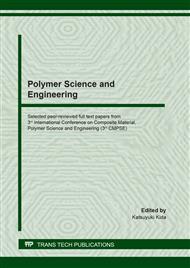p.151
p.157
p.165
p.174
p.182
p.188
p.193
p.199
p.205
Stress-Strain Properties of Engineered Cementitious Composites (ECC) Exposed to Sulfate Dry-Wet Cycle
Abstract:
The brittleness and easiness to crack expose marine concrete to serious durability issues. Engineered Cementitious Composites (ECC), as a new generation of ultra high performance concrete, is expected to overcome the strain-softening properties of traditional concrete and realize function of crack-width control. In this paper, the sulfate erosion of ECC under drying-wetting cycles was modelled in laboratory test. And the compression test on cylinders after exposure to different erosion cycles was implemented to obtain the stress-strain properties. The results disclose that sulfate erosion imposes significant influence on both the nonlinear ascending and descending portions of the stress-strain properties of ECC. As the erosion period extended, ECC strength undergoes an obvious increase. And the descending section of the eroded ECC shows a significant stress drop, which is quite different from that before erosion. Additionally, a simple analytical model was proposed to provide satisfactory prediction of the stress-strain properties of ECC exposed to sulfate erosion.
Info:
Periodical:
Pages:
182-187
Citation:
Online since:
August 2020
Authors:
Price:
Сopyright:
© 2020 Trans Tech Publications Ltd. All Rights Reserved
Share:
Citation:


